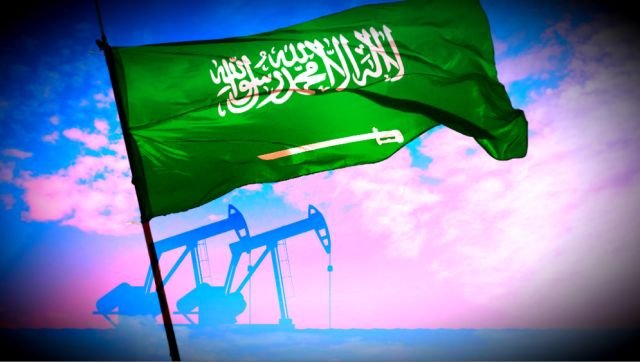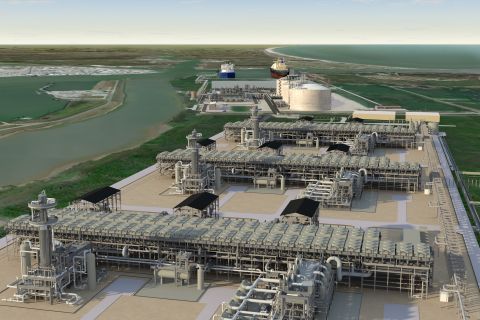
Saudi Arabia said to be fearful of any steps that could undermine April’s historic deal made by OPEC+. (Source: Shutterstock.com)
Saudi Arabia plans to keep oil production steady despite a recent slump in prices, fearing any bigger output cuts would lead rivals in OPEC to increase supply.
Five people briefed on Saudi Arabia’s thinking said Brent crude’s more than 10% slide in the past week, dipping below $40/bbl on Sept. 8, was causing concern but not yet panic in Riyadh. The kingdom has led OPEC and other producers such as Russia, known together as OPEC+, in slashing output in the face of the coronavirus pandemic.
The country fears that if it cuts more output to support prices, other countries will take advantage and produce greater amounts, jeopardising the unity of the OPEC+ group that enacted record supply cuts in April as demand collapsed.
“[Saudi Arabia] is not seeing much of a concern yet”, said one of these people, who added there was not a need for a “bigger cut” at this point. “All the issues we see today are about sentiment.”
How do you convince countries that are already struggling to make additional cuts to make even deeper ones? It is in everyone’s interest for Opec+ to stay the course.
Anas Alhajji, adviser to oil-producing governments
Traders are growing increasingly anxious about the pandemic’s longer-lasting impact on oil consumption, while reported production from certain OPEC countries such as the United Arab Emirates (UAE), Iraq and Nigeria in recent months has been higher than stipulated under the OPEC+ deal.
Saudi Arabia believes that the market sell-off in recent days has been exacerbated by the turmoil in equity markets and the strengthening of the U.S. dollar, said several people.
Brent crude oil recovered from below $20/bbl in April to a six-month high near $46/bbl in August, as the cuts took effect and demand picked up after government lockdowns eased.
But signs of renewed demand weakness in the U.S. and India, and slower crude imports by China, have combined with a rise in coronavirus cases elsewhere to spark fears that the oil market’s recovery has stalled.
Global oil demand is still down by almost 10% year-on-year, as many economies are mired in recession and car and airline travel remain depressed.
Saudi Arabia agreed a U.S.-backed deal in April with global producers to slice 9.7 million bbl/d off global supply. They tapered the cuts in August to 7.7 million bbl/d, or about 8% of global demand.
Saudi Arabia’s position has been complicated by higher than agreed supply from the UAE, its main Gulf ally, which has surprised traders by its lack of compliance with the deal.
Riyadh has publicly put pressure on OPEC members Iraq and Nigeria to comply with their own promises, given their history of weak compliance with production targets. The kingdom fears the UAE’s overproduction is undermining that stance.
Iraq, Nigeria and the UAE have said they will compensate for their earlier overproduction by cutting additional barrels in the coming months. Saudi Arabia does not want to undermine these undertakings by backing further cuts at this stage, according to people briefed on the matter.
Brent had recovered some ground to trade at $40.75/bbl by late afternoon on Sept. 9 in London.
Anas Alhajji, an adviser to oil-producing governments, said that asking for additional cuts would “complicate OPEC’s dynamic.”
“How do you convince countries that are already struggling to make additional cuts to make even deeper ones? It is in everyone’s interest for OPEC+ to stay the course.”
Recommended Reading
Segrist: The LNG Pause and a Big, Dumb Question
2024-04-25 - In trying to understand the White House’s decision to pause LNG export permits and wondering if it’s just a red herring, one big, dumb question must be asked.
Texas LNG Export Plant Signs Additional Offtake Deal With EQT
2024-04-23 - Glenfarne Group LLC's proposed Texas LNG export plant in Brownsville has signed an additional tolling agreement with EQT Corp. to provide natural gas liquefaction services of an additional 1.5 mtpa over 20 years.
US Refiners to Face Tighter Heavy Spreads this Summer TPH
2024-04-22 - Tudor, Pickering, Holt and Co. (TPH) expects fairly tight heavy crude discounts in the U.S. this summer and beyond owing to lower imports of Canadian, Mexican and Venezuelan crudes.
What's Affecting Oil Prices This Week? (April 22, 2024)
2024-04-22 - Stratas Advisors predict that despite geopolitical tensions, the oil supply will not be disrupted, even with the U.S. House of Representatives inserting sanctions on Iran’s oil exports.
Association: Monthly Texas Upstream Jobs Show Most Growth in Decade
2024-04-22 - Since the COVID-19 pandemic, the oil and gas industry has added 39,500 upstream jobs in Texas, with take home pay averaging $124,000 in 2023.




